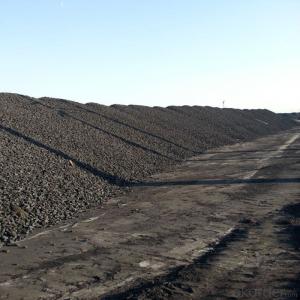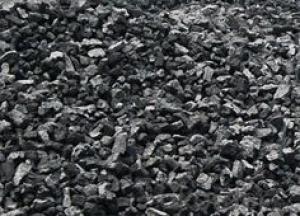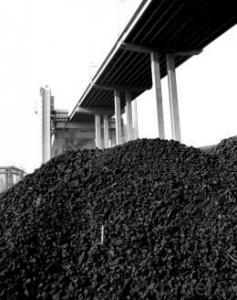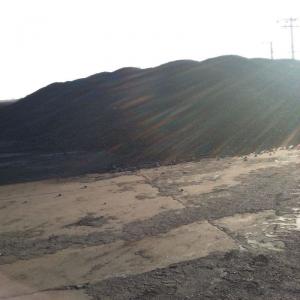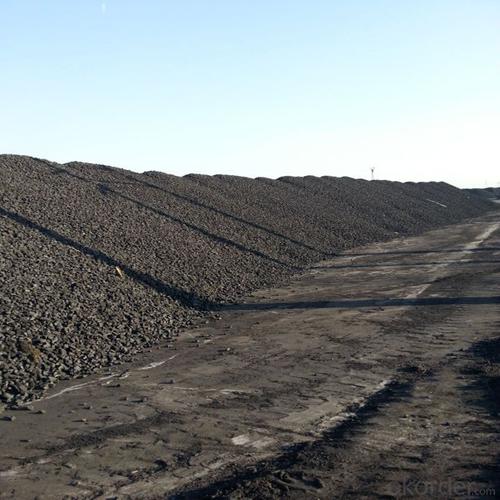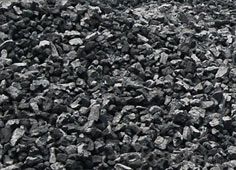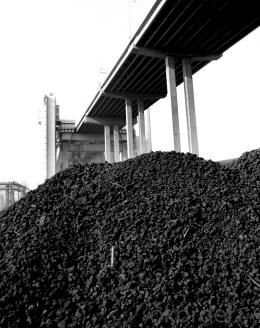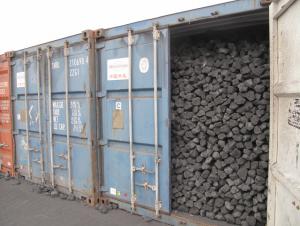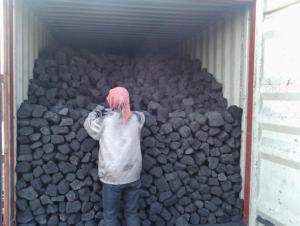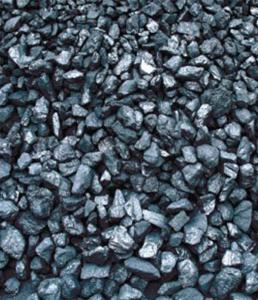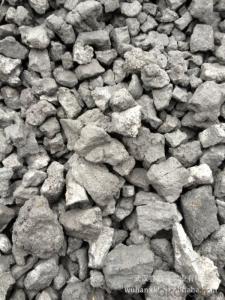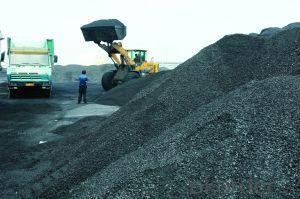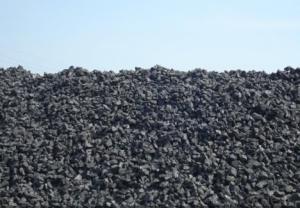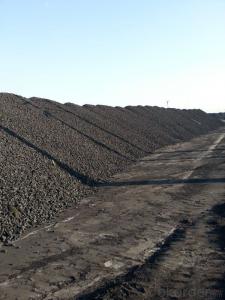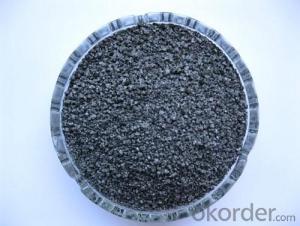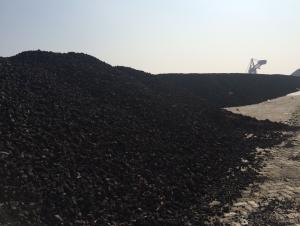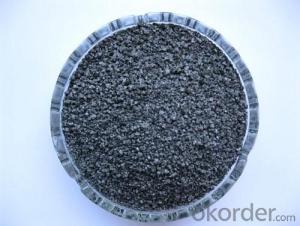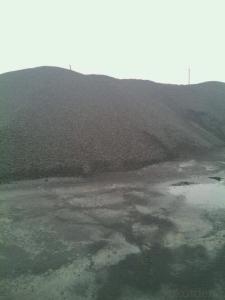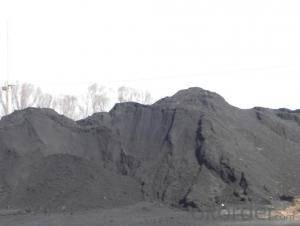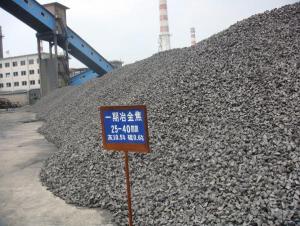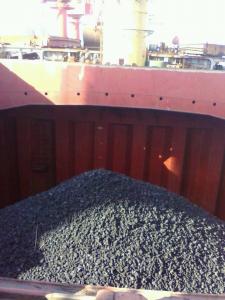NUT Coke of 20 ---- 50 mm
- Loading Port:
- Tianjin
- Payment Terms:
- TT OR LC
- Min Order Qty:
- 100 m.t.
- Supply Capability:
- 3000 m.t./month
OKorder Service Pledge
OKorder Financial Service
You Might Also Like
1. Structure of NUT Coke of 20 ---- 50 mm Description:
Coke is a hard texture, with carbon as the main component of irregular porous body, with cracks and defects in silver. The true density is 1.8 ~ 1.95 g/cm3, bulk density is 400 ~ 500 kg/m3, the porosity of 35% ~ 35%,.Coke all vertical and horizontal crack can be seen with the naked eye observation. The vertical and horizontal crack along the thick break, still is focal piece containing micro cracks.
Coke production of coking coal (coking coal), also known as metallurgical coal, belongs to the bituminous coal or sub-bituminous coal. Or use the various ratio of coal blend coking. Coking coal in the coke oven is isolated from oxygen after 1000 ° C carbonization is volatile component has been removing, the rest of the solid matter or coke. With the need of ironmaking as little as possible of sulphur, phosphorus pests, so should choose low sulfur, low phosphorus of coking coal.
2. Main Features of the NUT Coke of 20 ---- 50 mm :
• Quality assurance
• Mutual benefit
• Preferential price
• Various choice
3. NUT Coke of 20 ---- 50 mm Images:


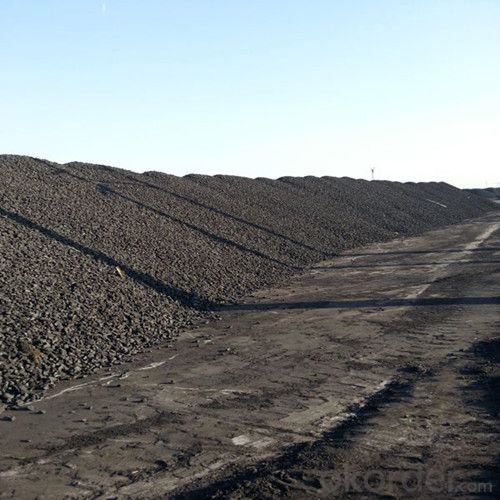

4. NUT Coke of 20 ---- 50 mm Specification:
Parameters | Guarantee | Rejection |
Total Moisture ( As received basis ) | 8% max | |
Ash ( dry basis ) | 12.5% max | > 13.5% |
Volatile Matter ( dry basis ) | 1.5% max | > 1.8% |
Sulphur ( dry basis ) | 0.70% max | > 0.80% |
Phosphorus ( dry basis ) | 0.035% max | > 0.045% |
Size 20-50 mm | 90% min | |
+50 mm | 5% max | > 8% |
-20 mm | 5% max | >8% |
5. FAQ
We have organized several common questions for our clients,may help you sincerely:
1) Main type
Metallurgical coke is blast furnace coke, coke, iron alloy and nonferrous metal smelting with coke. As more than 90% of the metallurgical coke for blast furnace ironmaking, so often called the blast furnace coke metallurgical coke.
Foundry coke is dedicated to cupola molten iron. Coke is the main fuel of cupola molten iron. Its role is hot metal melting furnace charge and overheating, support stock column maintain its good air permeability. As a result, coke blocks should have large, low reactivity, low porosity, with sufficient impact crushing strength, ash content and low sulfur content.
2) Application of coke
• Used for blast furnace ironmaking and used for copper, lead, zinc, titanium, antimony, mercury
• Other non-ferrous metal smelting of blast furnace,
• Reducing agent, compound
• The function of stock column frame.
3) The history of coke
From around the world, the coking coal resources are scarce, it is the precious resources must be protected, so has been seldom used coking coal coking alone. In China, the first kind of typical coal coking coal with hebei feng feng coal mine, shanxi gujiao cetrimonium, heilongjiang drops of jixi, anhui huaibei zhangzhuang and dabao top-coal panzhihua in sichuan province.The second category of typical coal coking coal have jilin tonghua iron works and the Inner Mongolia baotou beach ditch coal.Benxi, northeast China hebei tangshan, jingxing, shandong xinwen, etc., are all famous origin of coking coal.
- Q: What is the density of coke?
- Do you want to transport by rail? Ha ha, you might as well ask the freight forwarding clerk, he / she will tell you the various models of the volume and the weight can be installed, the conversion of the density of the pile is more accurate.
- Q: What is the difference between metallurgical coke and chemical coke
- Metallurgical coke, bituminous coal in the absence of air is heated to 950-1050 DEG C, after drying, pyrolysis, melting, bonding, curing and contraction of the final stage of this process is made of coke, coking high temperature (high temperature carbonization).
- Q: Ask: coking coke tower tower and what is the relationship?If you can give a working principle to explain what is better!Coking tower in oil coking plant
- Coking plant coal tower, primary cooling tower, cooling tower, etc.. The coal tower is used to store coal for coke oven. The cooling tower is used to cool the gas and cooling tower cooling water.
- Q: What chemical plant used to coke
- Under the condition of isolated air, the bituminous coal is heated to 950-1050 DEG C, and finally, the coke is made by drying, pyrolysis, melting, bonding, solidification and shrinkage
- Q: Who knows the proportion of pig iron and coke used in Cupola
- There are doubts: blank parts output is too low.3, blank export rate: raw materials into melting after the formation of blank, under normal circumstances, the common casting investment for every 1 tons of pig iron, scrap steel and other major raw materials, the lowest to 85% iron, after casting output blanks, nozzle, nozzle, riser, riser for iron smelting water ratio of about 30%; blank standard export rate, nozzle, riser re melted continue after put into use; production enterprises invested 1 tons per dryer, iron scrap and other major raw materials to the lowest 85% of the hot metal, roughly the same with ordinary casting, casting blank after the (standard yield) for hot metal ratio is about 70%, water riser for hot metal ratio is about 15%, and the same outlet riser re melted after continued use.
- Q: Some experimental results summarized the following two facts: the coke can not be used to restore aluminum mine, but it can be used for the reduction of copper and iron; no containing copper sulfate solution with tin, thus the activity sequence C, Al, Cu, Fe of the four elements is ______.
- Coke can not be used to restore aluminum ore, but can be used to restore copper and iron ore, indicating that aluminum is the most active
- Q: Coke and coal is one thing
- Coke is bituminous coal under the condition of isolated air, heated to 950-1050 DEG C, after drying, pyrolysis, melting, bonding, solidification, shrinkage and other stages of the final coke, this process is called high temperature coking (high temperature carbonization).Coke is a deep processing of coal products.
- Q: Braised meat burning coke, iron black layer, I do not know how to clean, please help answer
- If the paste pot may wish to try the following several waysBrush pot1, with hot water can be, it is easy to wash, do not use wire brush the ball, put the pot brush bad, if it is aluminum brush used for cooking after eating on the body is very good. (if you must brush it, you can use the cloth to replace the steel ball)
- Q: What are the requirements for the quality of coke in blast furnace smelting
- 4, volatile in coke: according to the volatile content of coke can determine the maturity of coke. Such as volatile content is greater than 1.5%, is said to produce coke; volatile less than 0.5 - 0.7%, it is said to be overdone, the general maturity of metallurgical coke volatile is divided into about 1%.5, the moisture in the coke: water fluctuations will make the measurement of coke is not allowed, resulting in fluctuations in furnace conditions. In addition, the increase in the moisture content of Coke will make the M04 high, M10 is low, the drum index error.6, the screening of coke composition: in the blast furnace coke particle size is also very important. In the past, the particle size of coke in our country is as follows: the coke size of large coke oven (1300 - 2000 square meters) is greater than 40 mm; the coke size of medium and small blast furnace is larger than 25 mm. However, some of the steel test shows that the coke particle size of 40 - 25 mm as well. Larger than 80 mm of coke to be whole, so that the particle size range. The coke block is uniform, the gap is large, the resistance is small, and the furnace condition runs well.
- Q: the CO reduces the iron oxide, and the part of CO burns, and the whole process will release a lot of heatCheck information, combined with the knowledge of the professional knowledge, for reference purposes only!
- Coke strength index is divided into cold strength index and thermal strength indexCold strength index: M40 M25 M10
Send your message to us
NUT Coke of 20 ---- 50 mm
- Loading Port:
- Tianjin
- Payment Terms:
- TT OR LC
- Min Order Qty:
- 100 m.t.
- Supply Capability:
- 3000 m.t./month
OKorder Service Pledge
OKorder Financial Service
Similar products
Hot products
Hot Searches
Related keywords
